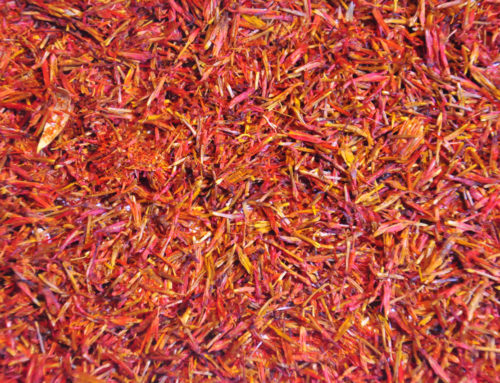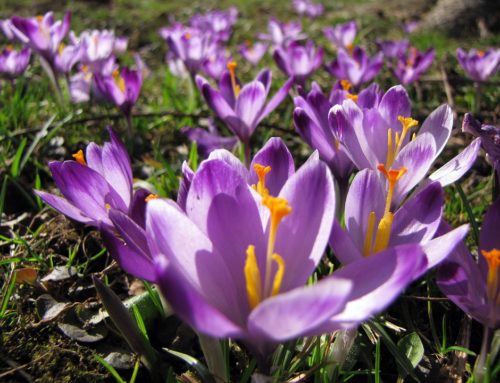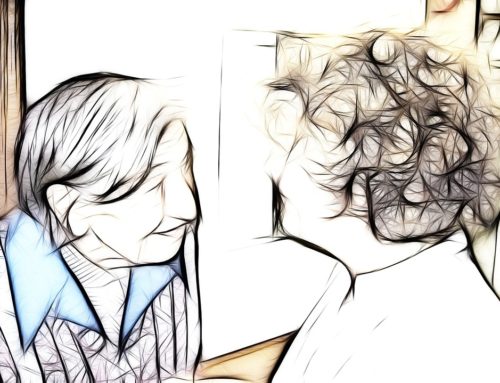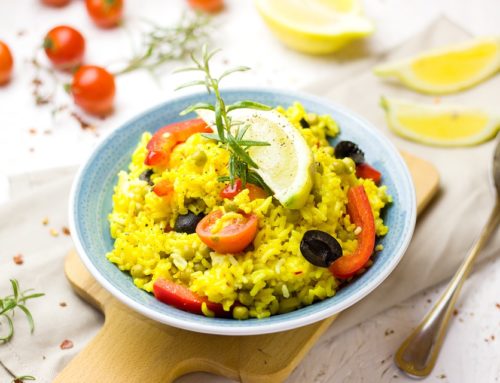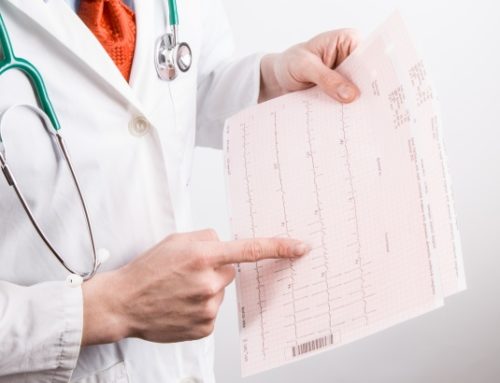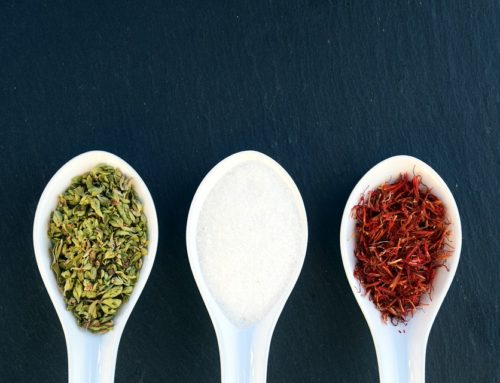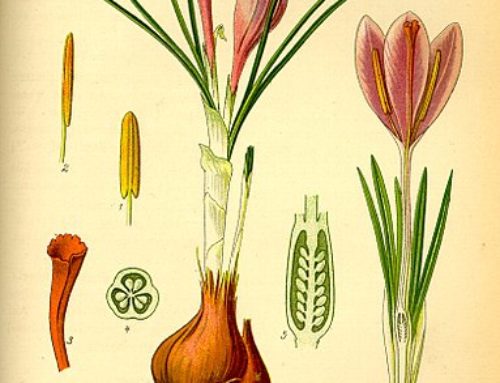Saffraan als antidepressiva. Gebruik saffraan bij burn-out, PMS, depressie, OCS, stress…
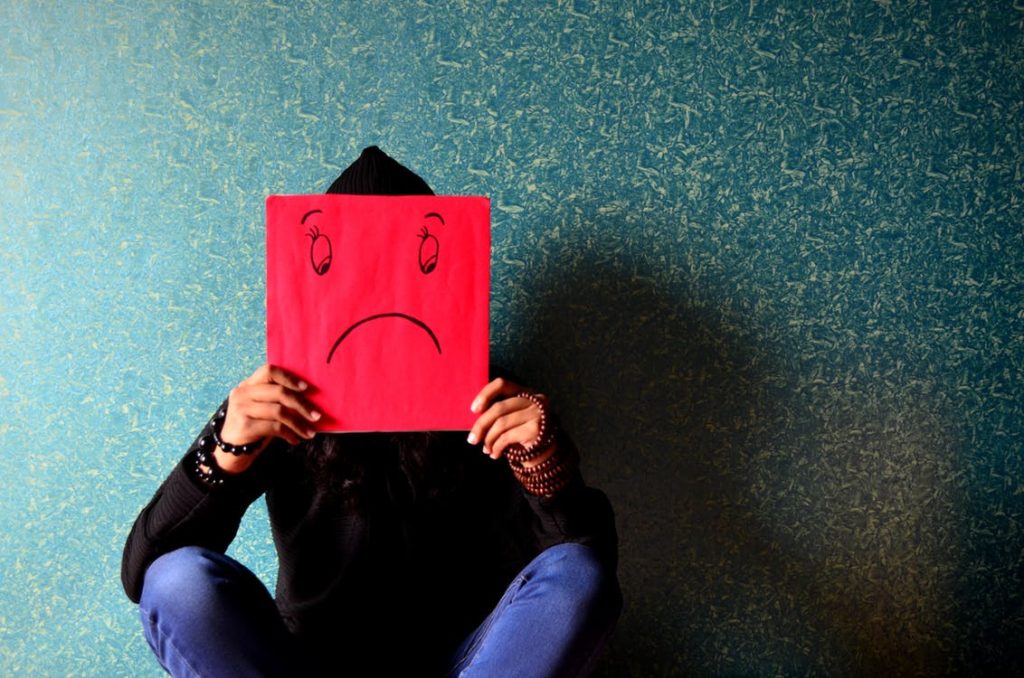 In het Westen zou 1 op de 10 volwassenen zeggen dat ze lijden aan depressie. Tegen 2020 zal depressie naar verwachting ’s werelds belangrijkste oorzaak worden van niet-functioneren (2). Jaarlijks worden miljarden uitgegeven aan moderne psychofarmacologie: antidepressiva. Het gebruik blijft stijgen, waarbij de Amerikanen de toppers zijn met 11% van de bevolking aan de antidepressiva (4).
In het Westen zou 1 op de 10 volwassenen zeggen dat ze lijden aan depressie. Tegen 2020 zal depressie naar verwachting ’s werelds belangrijkste oorzaak worden van niet-functioneren (2). Jaarlijks worden miljarden uitgegeven aan moderne psychofarmacologie: antidepressiva. Het gebruik blijft stijgen, waarbij de Amerikanen de toppers zijn met 11% van de bevolking aan de antidepressiva (4).
De tragedie? Ongeveer 90% van deze patiënten ervaren ten minste een van de vele ernstige bijwerkingen (5)(6)(7)(8)(9)(10) – zoals angst, constipatie, zelfmoordgedachten, slapeloosheid, dikker worden (6)7)(8)(9)(10) en seksuele stoornissen. Ook de associatie tussen het gebruik van antidepressiva tijdens de zwangerschap en het risico van autisme voor het kind (11) is groot. Daarbij komt dat maar liefst 73% van de personen die antidepressiva nemen, gaan leiden aan seksuele stoornissen (10). Antidepressiva verliezen vaak hun effectiviteit in de loop van de behandeling, maar de seksuele stoornis blijft vaak jaren en jaren duren (9). In een poging om bijwerkingen te voorkomen, zijn veel mensen nu op zoek naar alternatieven (13).
In dit artikel onthullen we nieuwe bevindingen, die aantonen dat saffraan (Crocus sativus) net zo effectief is als bepaalde huidige medicatie in de behandeling van depressie, maar zonder de ongewenste neveneffecten (14)(15). Er zijn ook voldoende aanwijzingen dat – wanneer saffraan wordt toegevoegd aan een bestaande behandeling met antidepressiva – saffraan werkt als een krachtige aanvullende therapie om de ongewenste seksuele effecten te blokkeren (16)! Saffraan zal ook kunnen worden ingezet tegen angst en obsessieve en compulsieve stoornissen, die ook vaak met antidepressiva verholpen worden.
Saffraan krachtig voor een goed humeur. Weg depressie! Weg burn-out! Weg antidepressiva!
Al in de Perzische traditionele geneeskunde werd saffraan gebruikt tegen depressie (17). Dit vroege gebruik leidde tot het hedendaagse onderzoek naar de invloed van saffraan op onze stemming. Uit onderzoeken sinds 2001, bleek dat saffraan-extract duidelijke antidepressieve eigenschappen bezit (18). Deze testen werden echter steeds uitgevoerd op muizen.
In 2010 deden wetenschappers daarom een wetenschappelijk afdoende dubbelblinde, gerandomiseerde, klinische studie op mensen om saffraan te vergelijken met een placebo. 40 volwassen poliklinische patiënten werden gediagnosticeerd als lijdend aan een ernstige depressie volgens de Diagnostic and Statistical Manual of Mental Disorders. Na 6 weken toonden de saffraan-proefpersonen aanzienlijk betere resultaten op de Hamilton Depression Rating Scale dan de placebo-proefpersonen. De werkzaamheid van Crocus sativus (saffraan) bij de behandeling van milde tot matige depressie (17) werd ook bij mensen bewezen. Er werden geen significante bijwerkingen waargenomen. Vervolgens gingen wetenschappers op zoek naar de werkzaamheid van saffraan in vergelijking met veel voorkomende antidepressivum-medicatie. Zou saffraan even effectief zijn tegen depressies als medicijnen?
Saffraan beter dan Tofranil (Imipramine) als antidepressiva
In een dubbelblinde single-center studie, verdeelden wetenschappers willekeurig 30 depressieve patiënten in twee groepen. Aan een groep gaven ze 3 maal daags een 30mg capsule saffraan; de andere groep kreeg 3 maal daags 100mg Tofranil. Alle proefpersonen voldeden aan de Diagnostic and Statistical Manual of Mental Disorders, 4de editie, criteria voor een zware depressie (14). Slechts 6 weken later, werd de dosis saffraan even effectief verklaard als Tofranil in de behandeling van milde tot matige depressie. Alleen leed de Tofranil-groep aan anticholinerge symptomen, zoals een droge mond (een anticholinergicum blokkeert de neurotransmitter acetylcholine in het zenuwstelsel) en aan een aanzienlijke, ongewenste sedatie. De auteur van de studie kwam daardoor tot de conclusie “dat saffraan een therapeutisch voordeel heeft bij de behandeling van milde tot matige depressie tegenover Tofranil” (14).
Saffraan even goed als Prozac (Fluoxetine) bij depressie en PMS
Veertig volwassen poliklinische patiënten die aan de Diagnostic and Statistical Manual of Mental Disorders, 4de editie voldeden (criteria voor depressie) werden willekeurig toegewezen aan een groep die twee keer per dag een capsule van 30mg saffraanstampers kreeg of aan de groep die tweemaal daags een capsule van 20mg Prozac moest slikken (15). Aan het einde van de 6 weken durende, dubbelblinde, gerandomiseerde studiewerd saffraan even effectief als Prozac bevonden bij de behandeling van milde tot matige depressie. Er waren geen significante verschillen in ongewenste reacties. (15).
Deze studies tonen duidelijk aan dat saffraan een krachtige alternatief is voor de vaak voorgeschreven antidepressiva voor de behandeling van depressie, maar dan zonder de bijwerkingen. Maar saffraan is ook perfect voor het behandelen van andere emotioneel-cognitieve stoornissen, zonder bijwerkingen!
Ondanks hun naam worden antidepressiva nl. voor meer dan depressies gebruikt. Zij worden voorgeschreven voor een breed scala van andere emotionele en cognitieve aandoeningen zoals obsessief-compulsieve stoornis, angsten en bij de ziekte van Alzheimer (19)(20)(21)(22).
Sommige wetenschappers redeneerden dat – als saffraan even effectief is tegen depressie als antidepressiva – saffraan wellicht ook een veiligere behandeling is voor deze andere stoornissen die vaak met antidepressiva behandeld worden. Verrassend blijkt nu dat, wanneer saffraan wordt toegevoegd aan de behandeling van mannelijke en vrouwelijke patiënten die reeds antidepressiva gebruikt, de negatieve seksuele bijwerkingen van de antidepressiva verminderen!
Saffraan effectief bij angstaanvallen
Angst kan verlammend zijn en bijna 30% van de westerse bevolking heeft in een bepaalde periode van hun leven met ernstige angstsymptomen te maken (27). Selectieve serotonine heropname remmers (SSRI’s) worden vaak aanbevolen voor de behandeling van angststoornissen (20) en voor de sociale angsten (21). Ze komen met een scala aan negatieve bijwerkingen, van misselijkheid tot seksuele stoornissen (6)(7)(8)(9).
Gelukkig hebben dierstudies een krachtige en veilig alternatief onthuld: ze tonen aan dat saffraan, meer bepaald de actieve bestanddelen ‘crocin’ en ‘safranal’ angstaanvallen verminderen, zonder nadelige bijwerkingen (28)(29).
Saffraan werkzaam bij obsessief-compulsieve stoornis (OCS)
Een obsessief-compulsieve stoornis ( OCS) kan zo ernstig zijn dat patiënten vrijwel al hun tijd besteden aan hun obsessies en dwangmatigheden (30). Meestal worden eerst antidepressiva geprobeerd, in een poging om de tijdrovende en stressvolle symptomen (22) van een obsessief-dwangmatige stoornis te beheersen. Het is niet ongebruikelijk dat verschillende medicijnen van verschillende doseringen moeten uitgeprobeerd worden, voordat enige mate van controle van de symptomen bereikt wordt (22). Uiteindelijk worden bijna altijd verschillende geneesmiddelen gecombineerd (22), wat kan resulteren in meerdere niveaus van negatieve symptomen die de positieve voordelen aanzienlijk tegenwerken.
Uit studies blijkt dat er een interactie is tussen crocin uit saffraan en de serotonerge (de neurotransmitters die verantwoordelijk zijn voor serotonine afgifte) uit medicatie (31). Een studie toonde aan dat crocin obsessief-dwangmatige stoornis-symptomen aanzienlijk kan verminderen zonder significante negatieve bijwerkingen (31).
Saffraan werkzaam bij vraatzucht en ongecontroleerd eten
Obesitas is een epidemie geworden. De aandoening, die bekend staat als reactionele vraatzucht, ook wel reactionele polyfagie, zorgt voor ongecontroleerd snacken en eten (33). Obesitas heeft te maken met onevenwicht in de neurotransmitters en een bijzonder laag niveau van serotonine. Stress, kwetsbaarheid en ontregelde hersenen verhogen je drang naar voedsel en te veel eten (32). Je beloont jezelf door te snacken en ongecontroleerd te eten (34)(35)(36)(37).
Helaas hebben eetlust onderdrukkende medicijnen vaak gevaarlijke nevenwerkingen: hartklepschade, geboorteafwijkingen, leverbeschadiging en verhoogde bloeddruk, soms zelfs met dodelijke gevolgen (38). Wetenschappers lanceerden een gerandomiseerde, dubbelblinde, placebo- gecontroleerde klinische studie met 60 vrouwen met licht overgewicht van wie ten minste de helft was beoordeeld als lijdend aan een vorm van dwangmatig snacken tussen de maaltijden. Na 8 weken daalde het aantal tussendoortjes in de saffraangroep met 28 % en rapporteerde 55 % een verminderde behoefte om te snacken (37)! Na 8 weken en zonder dieet, was de saffraangroep gemiddeld 2 kilo afgevallen en meldde verhoogde energie en reactievermogen (37). Dit gewichtsverlies laat zien hoe je met het terugbrengen van snacken op een zinvolle manier gewicht kan verliezen.
Antidepressiva veroorzaken in meer dan 50% van de patiënten ernstige nevenwerkingen.
Saffraan biedt een gezonde oplossing, neem niet zomaar antidepressiva omdat de dokter dit zegt!
Hoewel antidepressiva worden geassocieerd met een breed scala aan negatieve reacties (6)7)(8)(9)(10) kunnen met name negatieve seksuele bijwerkingen frustrerend zijn. Als negatieve seksuele bijwerkingen horen het verlies van seksuele drift, geen orgasme kunnen bereiken en erectiestoornissen vermeld. (9)(10).
Deze ongewenste seksuele symptomen worden vaak onderschat (10). Toch toont onderzoek aan dat seksuele disfunctie met selectieve serotonine heropname remmers (SSRI’s) en Effexor (Venlafaxine) tussen de 58 en 73 % van de antidepressiva-gebruikers treft (10)! En deze seksuele symptomen kunnen aanhouden lang nadat de medicatie is stopgezet – maanden, jaren, of zelfs voor onbepaalde tijd (9)! Helaas hebben mensen met een depressie vaak jaren met verschillende antidepressiva gestreden, voordat ze eindelijk een stabiel leven kunnen leiden met een specifieke dosering van een specifiek geneesmiddel. Artsen en patiënten zijn daarom terughoudend om hun regime ‘gewoon’ te veranderen om de seksuele klachten te voorkomen of te genezen (40)(41)(42). In plaats daarvan schrijven artsen vaak extra medicijnen voor (43)(44)(45)(46)(47). Deze toegevoegde medicijnen brengen echter telkens hun eigen negatieve bijwerkingen met zich mee (45)(46)(47)(48).
Ondertussen weten wetenschappers dat saffraan niet alleen als antidepressivum werkt, maar ook als afrodisiacum positieve effecten op het seksleven kan hebben. Studies bij mensen en dieren hebben dit aangetoond (16)(49)(50)(51).
Saffraan blokkeert de negatieve seksuele bijwerkingen van antidepressiva!
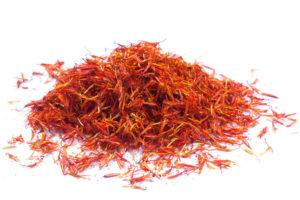 In het najaar van 2012, werd een gerandomiseerde, dubbelblinde trial doorgevoerd bij 36 gehuwde mannen met een depressieve aandoening, waarvan de symptomen met succes gestabiliseerd werden met Prozac, maar die klachten hadden over seksuele stoornissen. Zij werden willekeurig toegewezen aan een groep om naast hun gebruikelijke dosering Prozac, dagelijks 2x15mg saffraan of dagelijks 2x15mg placebo bijte neen. De seksuele functie werd beoordeeld met behulp van een standaard index (16). Na 4 weken hadden de mannen in de Prozac-plus-saffraan-groep significant minder erectiestoornissen en betere geslachtsgemeenschap dan de Prozac-plus-placebo-groep. Het team concludeerde dat “saffraan een aanvaardbare en doeltreffende behandeling is voor mannelijke seksuele stoornissen veroorzaakt door Prozac” (16).
In het najaar van 2012, werd een gerandomiseerde, dubbelblinde trial doorgevoerd bij 36 gehuwde mannen met een depressieve aandoening, waarvan de symptomen met succes gestabiliseerd werden met Prozac, maar die klachten hadden over seksuele stoornissen. Zij werden willekeurig toegewezen aan een groep om naast hun gebruikelijke dosering Prozac, dagelijks 2x15mg saffraan of dagelijks 2x15mg placebo bijte neen. De seksuele functie werd beoordeeld met behulp van een standaard index (16). Na 4 weken hadden de mannen in de Prozac-plus-saffraan-groep significant minder erectiestoornissen en betere geslachtsgemeenschap dan de Prozac-plus-placebo-groep. Het team concludeerde dat “saffraan een aanvaardbare en doeltreffende behandeling is voor mannelijke seksuele stoornissen veroorzaakt door Prozac” (16).
In 2013 werden 38 vrouwen onderzocht, die allen een zware depressie hadden en waren gestabiliseerd op Prozac, maar bleven lijden aan verschillende seksuele stoornissen veroorzaakt door dit antidepressivum. In een dubbelblinde studie werd de helft van de vrouwen willekeurig toegewezen een supplement van 30mg/dag saffraan-extract bij te nemen. De andere helft kreeg een placebo. Alle deelnemers bleven hun gebruikelijke dosering van Prozac nemen. De evaluaties werden gemaakt met behulp van de Female Sexual Function Index (FSFI) (49). Na 4 weken ondervonden de vrouwen in de saffraan-groep een aanzienlijke verbetering in de totale seksuele functie (FSFI), opwinding, smering en pijn (49), ondanks het feit dat zij nog steeds hetzelfde antidepressivum namen dat de ongewenste seksuele symptomen had veroorzaakt. Duidelijk: saffraan biedt een krachtige, aanvullende therapie voor de behandeling van seksuele bijwerkingen van antidepressiva.
Alle bijwerkingen van antidepressiva
Er zijn 119 gepubliceerde studies uit twaalf landen, evenals 99 waarschuwingen op medicijnen uit 10 landen die samen aangeven dat antidepressiva de volgende ongewenste effecten kunnen veroorzaken (6)(7)(8)(9)(10)(70): abnormaal bloeden of blauwe plekken, abnormale gedachten, agitatie, agressie, ernstige onrust, angst, geboorteafwijkingen, zwarte tong, wazig zien of visieveranderingen, coma, verwarring, constipatie, krampen, hevige pijn op de borst, dood, verminderd geheugen of concentratie, delirium, waandenkbeelden, depressie, suikerziekte, diarree, moeite met ademhalen of slikken, duizeligheid of flauwvallen, droge mond, emotionele afstomping, extreme rusteloosheid, flauwte, hallucinaties, hoofdpijn, dalende hartslag, hartaanvallen, moordzuchtige ideeën of actie, vijandigheid, hyperactiviteit, hypomanie, slapeloosheid, loomheid, leverproblemen, laag aantal witte bloedcellen, manie of manische reacties, geheugenverlies, stemmingswisselingen, spierspasmen, misselijkheid, nervositeit, maligne neurolepticasyndroom, nachtelijk zweten, nachtmerries, gevoelloosheid in de ledematen, paniekaanvallen, paranoia, priapisme, vroeggeboorten, psychotische episodes, rusteloosheid, risico op borstkanker, risico om te vallen, verdoving, zelfpijniging, epileptische aanvallen, serotonine-syndroom, ernstige hoofdpijn, ernstige spierstijfheid, seksuele disfunctie, wankelheid, schuifelend lopen, langzame of moeilijk spraak, spontane abortus, beroerte, suïcidale gedachten of gedrag, gewelddadig gedrag, gewichtstoename, ontwenningsverschijnselen, geelverkleuring van de huid of ogen.
Saffraan vergeleken met lavendel, Sint-Janskruid en Prozac
In vergelijking met St Janskruid is wetenschappelijk bewezen dat saffraan als anti-depressivum efficiënter en minder lichtgevoelig is. Saffraan heeft ook minder interactie met medicijnen (vecht niet om dezelfde enzymen van het lichaam om medicijnen hun werk te laten doen). In haar kalmerende werking en om gemakkelijker in te slapen is saffraan effectiever dan lavendel.
Een van de Iraanse wetenschapscentra die onderzoek uitvoeren naar saffraan, wordt geleid door Shahin Akhondzadeh van het Roozbeh Psychiatrisch Ziekenhuis aan de Teheran Universiteit. Dit universitaire centrum onderzoekt het gebruik van verschillende geneesmiddelen en kruiden voor psychische stoornissen, verslavingen aan pijnstillers en epilepsie. De klinische bevindingen suggereren dat saffraan een veilig en effectief antidepressivum is. In een gerandomiseerde, dubbelblinde studie werd gedurende 6 weken dagelijks 30 mg saffraanextract (in capsules) gegeven. Het resultaat was een significante vermindering van depressie in vergelijking met placebopatiënten en zonder bijwerkingen (1). Dit onderzoek was een vervolg op een dubbelblind onderzoek voor de behandeling van depressie waarin dezelfde hoeveelheid saffraan werd vergeleken met het geneesmiddel Imipramine (2). Eerder al werd saffraan vergeleken met het geneesmiddel Fluoxetine (beter bekend onder de merknaam Prozac). Deze studie toonde aan dat saffraan evengoed was als het geneesmiddel in de behandeling van zowel depressie en epilepsie (3). Farmacologische studies in Iran (4) en Japan (5, 6) bevestigen de anti-epileptische werking van saffraan.
Saffraan beïnvloedt hormonen: saffraan ondersteunend als antidepressiva bij depressies en PMS
Een bijzonder merkwaardig document werd gepubliceerd in het juni 2011 nummer van Phytomedicine . H. Fukui en collega’s vertellen ons dat snuiven van saffraan, voldoende prikkelt om hormonale veranderingen bij jonge vrouwen teweeg te brengen. (Fukui H., Toyoshima K., Komaki R. Psychologische en neuro-endocrinologische effecten van geur van saffraan ( Crocus sativus ). Phytomedicine. 2011 15 juni, 18 (8-9) :726-30.) Dit was een dubbel-blinde, placebo-gecontroleerde studie waarbij slechts een korte periode van blootstelling (slechts 20 minuten) aan saffraan. Zevenenveertig vrouwelijke studenten namen deel aan de studie. Hiervan werden 36 willekeurig toegewezen aan een groep saffraan en 11 toegewezen aan een controlegroep. De experimentele oplossingen met saffraan werden in die mate verdund dat de geur van saffraan niet kon worden waargenomen. De ingediende speekselstalen werden getest op cortisol-, testosteron- en oestrogeen-niveaus. Na monsterafname namen de 47 vrouwen namen deel aan een psychologische test (de State-Trait Anxiety Inventory: STAI) om hun angst te meten. Eerlijk, wie zou denken dat snuiven gedurende twintig minuten veel verschil zou maken? De onderzoekers konden echter aantonen dat het snuiven aan de onherkenbaar gemaakte oplossing van verdunde saffraan een significant effect had op deze jonge vrouwen. Hun cortisolspiegel ging naar beneden en hun oestrogeenspiegel ging omhoog. Angstniveaus daalden in de groep die saffraan had gesnoven (1).
Een andere onderzoeksgroep rapporteerde ongeveer drie jaar geleden dat het oraal innemen van 30 mg/dag van saffraan PMS-symptomen verbetert. Het duurde 3-4 menstruele cycli om resultaten te zien.
Saffraan bij depressies, geen prozac meer
In minstens vier gerandomiseerde dubbelblinde placebo-gecontroleerde klinische studies werd saffraan effectief bevonden bij de behandeling van depressies. In 2 van deze studies, gebruikte men 30mg/dag saffraan gedurende 6 weken. 1 studie maakte een vergelijking tussen saffraan en een placebo, terwijl de andere studie het effect van saffraan met het antidepressivum Prozac vergeleek. Saffraan werkte veel beter dan het placebo en had een vergelijkbaar effect als Prozac (3)(4). De 2 studies maakten gebruik van de hele stampers van saffraanbloemen. Twee nieuwere studies gebruikten de bloemblaadjes. De resultaten waren gelijk aan de resultaten met de echte saffraan (stampers). Bloemblaadjes van de saffraankrokus werken veel beter dan placebo’s tegen depressie (5); ze werken even goed als Prozac (6), maar hebben geen negatieve bijwerkingen.
Hoe vreemd dit ook klinkt, dit onderzoek is niet het enige voorbeeld van geuren met medische impact.
Wat is aromatherapie?
Wij kunnen andere voorbeelden vinden van de voordelen van geuren wanneer we zoeken naar ‘aromatherapie’. Lavendel als aromatherapie vermindert vb. angst bij zowel volwassen en pediatrische chirurgische patiënten (7)(8). Andere relatief recente studies suggereren dat saffraan het voedsel zou kunnen zijn voor een scala aan medische aandoeningen, met name kanker (9).
Onderzoeken antidepressiva, burn out, depressie, saffraan
Saffraan is een sterk antidepressivum. Saffraan kan milde depressies en burn-out genezen. Safranal is bekend voor zijn kalmerende en anti-epileptisch eigenschappen en versterkt zo onze weerstand tegen stress. Crocin in saffraan versnelt het inslapen en versterkt de slaap.
| Saffraan is een sterk antidepressivum. | 550 |
| Saffraan kan milde depressies en burn-out genezen. | 551 |
| Saffraan versterkt onze weerstand tegen stress, zowel via onze stofwisseling als in ons gedrag. | 552 |
| Saffraan als antidepressivum even effectief bij milde of gematigde depressie en burn-out als de geneesmiddelen Fluoxetine en Imipramine. | 553 |
| Safranal in saffraan is bekend voor zijn kalmerende en anti-epileptisch eigenschappen. Deze studie toont aan dat safranal ook een hypnotisch effect heeft tijdens de slaap. | 554 |
| Crocin in saffraan versnelt inslapen en versterkt de slaap. | 555 |
PMS, premenstrueel syndroom en saffraan
Saffraan helpt bij pre-menstrueel syndroom (PMS). Ook de geur van saffraan verlicht menstruele problemen zoals PMS, onregelmatige menstruatie en menstruatiepijn.
| De geur van saffraan verlicht menstruele problemen zoals PMS (premenstrueel syndroom), onregelmatige menstruatie en menstruatiepijn. | 556 |
| Saffraan helpt bij pre-menstrueel syndroom (PMS). | 557 |
Bronnen en meer lezen over saffraan:
- Fukui H, Toyoshima K, Komaki R. Psychological and neuroendocrinological effects of odor of saffron (Crocus sativus). Phytomedicine. 2011 Jun 15;18(8-9):726-30.
- Agha-Hosseini M, Kashani L, Aleyaseen A, Ghoreishi A, Rahmanpour H, Zarrinara AR, et al. Crocus sativus L. (saffron) in the treatment of premenstrual syndrome: a double-blind, randomised and placebo-controlled trial. BJOG. 2008 Mar;115(4):515-9.
- Akhondzadeh S, Tahmacebi-Pour N, Noorbala AA, Amini H, Fallah-Pour H, Jamshidi AH, et al. Crocus sativus L. in the treatment of mild to moderate depression: a double-blind, randomized and placebo-controlled trial. Phytother Res. 2005 Feb;19(2):148-51.
- Noorbala AA, Akhondzadeh S, Tahmacebi-Pour N, Jamshidi AH. Hydro-alcoholic extract of Crocus sativus L. versus fluoxetine in the treatment of mild to moderate depression: a double-blind, randomized pilot trial. J Ethnopharmacol. 2005 Feb 28;97(2):281-4. Epub 2005 Jan 6.
- Moshiri E, Basti AA, Noorbala AA, Jamshidi AH, Hesameddin Abbasi S, Akhondzadeh S. Crocus sativus L. (petal) in the treatment of mild-to-moderate depression: a double-blind, randomized and placebo-controlled trial. Phytomedicine. 2006 Nov;13(9-10):607-11. Epub 2006 Sep 18.
- Akhondzadeh Basti A, Moshiri E, Noorbala AA, Jamshidi AH, Abbasi SH, Akhondzadeh S. Comparison of petal of Crocus sativus L. and fluoxetine in the treatment of depressed outpatients: a pilot double-blind randomized trial.
Prog Neuropsychopharmacol Biol Psychiatry. 2007 Mar 30;31(2):439-42. - Braden R, Reichow S, Halm MA. The use of the essential oil lavandin to reduce preoperative anxiety in surgical patients. J Perianesth Nurs. 2009 Dec;24(6):348-55.
- Nord D, Belew J. Effectiveness of the essential oils lavender and ginger in promoting children’s comfort in a perianesthesia setting. J Perianesth Nurs. 2009 Oct;24(5):307-12.
- Bathaie SZ, Mousavi SZ. New applications and mechanisms of action of saffron and its important ingredients. Crit Rev Food Sci Nutr. 2010 Sep;50(8):761-86.
- Zhong YJ, Shi F, Zheng XL, Wang Q, Yang L, Sun H, et al. Crocetin induces cytotoxicity and enhances vincristine-induced cancer cell death via p53-dependent and -independent mechanisms. Acta Pharmacol Sin. 2011 Oct 10. doi: 10.1038/aps.2011.109.
- Mousavi SH, Moallem SA, Mehri S, Shahsavand S, Nassirli H, Malaekeh-Nikouei B. Improvement of cytotoxic and apoptogenic properties of crocin in cancer cell lines by its nanoliposomal form. Pharm Biol. 2011 Oct;49(10):1039-45.
- Amin A, Hamza AA, Bajbouj K, Ashraf SS, Daoud S. Saffron: A potential candidate for a novel anticancer drug against hepatocellular carcinoma. Hepatology. 2011 May 23. doi: 10.1002/hep.24433.
- Gutheil WG, Reed G, Ray A, Dhar A. Crocetin: an Agent Derived from Saffron for Prevention and Therapy for Cancer. Curr Pharm Biotechnol. 2011 Apr
- Samarghandian S, Tavakkol Afshari J, Davoodi S. Suppression of pulmonary tumor promotion and induction of apoptosis by Crocus sativus L. extraction. Appl Biochem Biotechnol. 2011 May;164(2):238-47.
- Samarghandian S, Boskabady MH, Davoodi S. Use of in vitro assays to assess the potential antiproliferative and cytotoxic effects of saffron (Crocus sativus L.) in human lung cancer cell line. Pharmacogn Mag. 2010 Oct;6(24):309-14.
- Chryssanthi DG, Dedes PG, Karamanos NK, Cordopatis P, Lamari FN. Crocetin inhibits invasiveness of MDA-MB-231 breast cancer cells via downregulation of matrix metalloproteinases. Planta Med. 2011 Jan;77(2):146-51. Epub 2010 Aug 27.
- Bakshi H, Sam S, Rozati R, Sultan P, Islam T, Rathore B, et al. DNA fragmentation and cell cycle arrest: a hallmark of apoptosis induced by crocin from kashmiri saffron in a human pancreatic cancer cell line. Asian Pac J Cancer Prev. 2010;11(3):675-9.
- Dhar A, Mehta S, Dhar G, Dhar K, Banerjee S, Van Veldhuizen P, et al. Crocetin inhibits pancreatic cancer cell proliferation and tumor progression in a xenograft mouse model. Mol Cancer Ther. 2009 Feb;8(2):315-23.
- Bakshi HA, Sam S, Feroz A, Ravesh Z, Shah GA, Sharma M. Crocin from Kashmiri saffron (Crocus sativus) induces in vitro and in vivo xenograft growth inhibition of Dalton’s lymphoma (DLA) in mice. Asian Pac J Cancer Prev. 2009;10(5):887-90.
- Fukui H, Toyoshima K, Komaki R. Psychological and neuroendocrinological effects of odor of saffron (Crocus sativus). Phytomedicine. 2011 Jun 15;18(8-9):726-30.
- Agha-Hosseini M, Kashani L, Aleyaseen A, Ghoreishi A, Rahmanpour H, Zarrinara AR, et al. Crocus sativus L. (saffron) in the treatment of premenstrual syndrome: a double-blind, randomised and placebo-controlled trial. BJOG. 2008 Mar;115(4):515-9.
- Akhondzadeh S, Tahmacebi-Pour N, Noorbala AA, Amini H, Fallah-Pour H, Jamshidi AH, et al. Crocus sativus L. in the treatment of mild to moderate depression: a double-blind, randomized and placebo-controlled trial. Phytother Res. 2005 Feb;19(2):148-51.
- Noorbala AA, Akhondzadeh S, Tahmacebi-Pour N, Jamshidi AH. Hydro-alcoholic extract of Crocus sativus L. versus fluoxetine in the treatment of mild to moderate depression: a double-blind, randomized pilot trial. J Ethnopharmacol. 2005 Feb 28;97(2):281-4. Epub 2005 Jan 6.
- Moshiri E, Basti AA, Noorbala AA, Jamshidi AH, Hesameddin Abbasi S, Akhondzadeh S. Crocus sativus L. (petal) in the treatment of mild-to-moderate depression: a double-blind, randomized and placebo-controlled trial. Phytomedicine. 2006 Nov;13(9-10):607-11. Epub 2006 Sep 18.
- Akhondzadeh Basti A, Moshiri E, Noorbala AA, Jamshidi AH, Abbasi SH, Akhondzadeh S. Comparison of petal of Crocus sativus L. and fluoxetine in the treatment of depressed outpatients: a pilot double-blind randomized trial.
- Prog Neuropsychopharmacol Biol Psychiatry. 2007 Mar 30;31(2):439-42.
- Braden R, Reichow S, Halm MA. The use of the essential oil lavandin to reduce preoperative anxiety in surgical patients. J Perianesth Nurs. 2009 Dec;24(6):348-55.
- Nord D, Belew J. Effectiveness of the essential oils lavender and ginger in promoting children’s comfort in a perianesthesia setting. J Perianesth Nurs. 2009 Oct;24(5):307-12.
- Bathaie SZ, Mousavi SZ. New applications and mechanisms of action of saffron and its important ingredients. Crit Rev Food Sci Nutr. 2010 Sep;50(8):761-86.
- Zhong YJ, Shi F, Zheng XL, Wang Q, Yang L, Sun H, et al. Crocetin induces cytotoxicity and enhances vincristine-induced cancer cell death via p53-dependent and -independent mechanisms. Acta Pharmacol Sin. 2011 Oct 10. doi: 10.1038/aps.2011.109.
- Mousavi SH, Moallem SA, Mehri S, Shahsavand S, Nassirli H, Malaekeh-Nikouei B. Improvement of cytotoxic and apoptogenic properties of crocin in cancer cell lines by its nanoliposomal form. Pharm Biol. 2011 Oct;49(10):1039-45.
- Amin A, Hamza AA, Bajbouj K, Ashraf SS, Daoud S. Saffron: A potential candidate for a novel anticancer drug against hepatocellular carcinoma. Hepatology. 2011 May 23. doi: 10.1002/hep.24433.
- Gutheil WG, Reed G, Ray A, Dhar A. Crocetin: an Agent Derived from Saffron for Prevention and Therapy for Cancer. Curr Pharm Biotechnol. 2011 Apr 5.
- Samarghandian S, Tavakkol Afshari J, Davoodi S. Suppression of pulmonary tumor promotion and induction of apoptosis by Crocus sativus L. extraction. Appl Biochem Biotechnol. 2011 May;164(2):238-47.
- Samarghandian S, Boskabady MH, Davoodi S. Use of in vitro assays to assess the potential antiproliferative and cytotoxic effects of saffron (Crocus sativus L.) in human lung cancer cell line.
- Pharmacogn Mag. 2010 Oct;6(24):309-14.
- Chryssanthi DG, Dedes PG, Karamanos NK, Cordopatis P, Lamari FN. Crocetin inhibits invasiveness of MDA-MB-231 breast cancer cells via downregulation of matrix metalloproteinases. Planta Med. 2011 Jan;77(2):146-51. Epub 2010 Aug 27.
- Bakshi H, Sam S, Rozati R, Sultan P, Islam T, Rathore B, et al. DNA fragmentation and cell cycle arrest: a hallmark of apoptosis induced by crocin from kashmiri saffron in a human pancreatic cancer cell line. Asian Pac J Cancer Prev. 2010;11(3):675-9.
- Dhar A, Mehta S, Dhar G, Dhar K, Banerjee S, Van Veldhuizen P, et al. Crocetin inhibits pancreatic cancer cell proliferation and tumor progression in a xenograft mouse model. Mol Cancer Ther. 2009 Feb;8(2):315-23.
- Bakshi HA, Sam S, Feroz A, Ravesh Z, Shah GA, Sharma M. Crocin from Kashmiri saffron (Crocus sativus) induces in vitro and in vivo xenograft growth inhibition of Dalton’s lymphoma (DLA) in mice.
- Asian Pac J Cancer Prev. 2009;10(5):887-90.
- Boskabady MH, Shafei MN, Shakiba A, Sefidi HS. Effect of aqueous-ethanol extract from Crocus sativus (saffron) on guinea-pig isolated heart.
- Phytother Res . 2007 Dec 4;
- Aung HH, Wang CZ, Ni M, Fishbein A, Mehendale SR, Xie JT, Shoyama CY, Yuan CS. Crocin from Crocus sativus possesses significant anti-proliferation effects on human colorectal cancer cells.
- Exp Oncol . 2007 Sep; 29 ( 3 ): 175-80 .
- Schmidt M, Betti G, Hensel A. Saffron in phytotherapy: pharmacology and clinical uses.
- Wien Med Wochenschr . 2007; 157 ( 13-14 ): 315-9 . Review.
- Ochiai T, Shimeno H, Mishima K, Iwasaki K, Fujiwara M, Tanaka H, Shoyama Y, Toda A, Eyanagi R, Soeda S. Protective effects of carotenoids from saffron on neuronal injury in vitro and in vivo.
- Biochim Biophys Acta . 2007 Apr; 1770 ( 4 ): 578-84 .
- Moshiri E, Basti AA, Noorbala AA, Jamshidi AH, Hesameddin Abbasi S, Akhondzadeh S. Crocus sativus L. (petal) in the treatment of mild-to-moderate depression: a double-blind, randomized and placebo-controlled trial.
- Phytomedicine . 2006 Nov; 13 ( 9-10 ): 607-11
- Sheng L, Qian Z, Zheng S, Xi L. Mechanism of hypolipidemic effect of crocin in rats: crocin inhibits pancreatic lipase.
- Eur J Pharmacol . 2006 Aug 14; 543 ( 1-3 ): 116-22.
- Akhondzadeh S, et al., Comparison of Crocus sativus and imipramine in the treatment of mild to moderate depression: a pilot double-blind randomized trial, Biomed Central Complementary and Alternative Medicine 2004; 4(1): 12.
- Noorbala AA, Hydro-alcoholic extract of Crocus sativus versus fluoxetine in the treatment of mild to moderate depression: a double-blind, randomized pilot trial, Journal of Ethnopharmacology 2005; 97(2): 281–284
- Hosseinzadeh H and Khosravan V, Anticonvulsant effects aqueous and ethanolic extracts of Crocus sativus stigmas in mice, Archives of Iranian Medicine 2002; 5: 44–47.
- Abe K, Saito H, Effects of saffron extract and its constituent crocin on learning behavior and long-term Potentiation, Phytother Res. 2000; 14: 149–52.
Zhang Y, Shoyama Y, Sugiura M, Saito H, Effect of Crocus sativus on the ethanol-induced impairment of passive avoidance performances in mice, - Biological and Pharmaceutical Bulletin 1994; 17: 217–221.
- Escribano J, et al., Crocin, safranal and picrocrocin from saffron (Crocus sativus) inhibit the growth of human cancer cells in vitro, Cancer Letters 1996; 100 (1–2): 23–30.
- Akhondzadeh S, Tahmacebi-Pour N, Noorbala AA, et al. Crocus sativus L. in the treatment of mild to moderate depression: a double-blind, randomized and placebo-controlled trial. Phytother Res. 2005;19(2):148-151.
- Noorbala AA, Akhondzadeh S, Tahmacebi-Pour N, Jamshidi AH. Hydro-alcoholic extract of Crocus sativus L. versus fluoxetine in the treatment of mild to moderate depression: a double-blind, randomized pilot trial. J Ethnopharmacol. 2005;97(2):281-284.
- Moshiri E, Basti AA, Noorbala AA, Jamshidi AH, Hesameddin Abbasi S, Akhondzadeh S. Crocus sativus L. (petal) in the treatment of mild-to-moderate depression: a double-blind, randomized and placebo-controlled trial. Phytomedicine. 2006;13(9-10):607-611.
- Akhondzadeh Basti A, Moshiri E, Noorbala AA, Jamshidi AH, Abbasi SH, Akhondzadeh S. Comparison of petal of Crocus sativus L. and fluoxetine in the treatment of depressed outpatients: a pilot double-blind randomized trial. Prog Neuropsychopharmacol Biol Psychiatry. 2007;31(2):439-442.
- Braden R, Reichow S, Halm MA. The use of the essential oil lavandin to reduce preoperative anxiety in surgical patients. J Perianesth Nurs. 2009;24(6):348-355.
- Nord D, Belew J. Effectiveness of the essential oils lavender and ginger in promoting children’s comfort in a perianesthesia setting. J Perianesth Nurs. 2009;24(5):307-312.
- Kiecolt-Glaser JK, Graham JE, Malarkey WB, Porter K, Lemeshow S, Glaser R. Olfactory influences on mood and autonomic, endocrine, and immune function. Psychoneuroendocrinology. 2008;33(3):328-339.
- Available at: http://www.cdc.gov/features/dsdepression/. Accessed April 18, 2013.
- Swartz HA, Rollman BL. Managing the global burden of depression: lessons from the developing world. World Psychiatry. 2003 Oct;2(3):162-3.
- Grundmann M, Kacirova I, Urinovska R. Therapeutic monitoring of psychoactive drugs – antidepressants: A review. Biomed Pap Med Fac Univ Palacky
- Olomouc Czech Repub. doi: 10.5507/bp.2013.020. Epub 2013 Mar 21.Available at: http://www.cdc.gov/nchs/data/databriefs/db76.htm#about. Accessed April 18, 2013.Available at: http://www.consumerreports.org/health/resources/pdf/best-buy-drugs/Antidepressants_update.pdf. Accessed April 18, 2013.Available at: http://www.cchrint.org/psychiatric-drugs/antidepressantsideeffects/. Accessed April 18, 2013.
- Coupland C, Dhiman P, Morriss R, Arthur A, Barton G, Hippisley-Cox J. Antidepressant use and risk of adverse outcomes in older people: population based cohort study. BMJ. 2011 Aug 2;343:d4551.
- Reynolds GP, Kirk SL. Metabolic side effects of antipsychotic drug treatment—pharmacological mechanisms. Pharmacol Ther. 2010 Jan;125(1):169-79.
- Csoka A, Bahrick A, Mehtonen O-P. Persistent sexual dysfunction after discontinuation of selective serotonin reuptake inhibitors. J Sex Med. 2008;5:227-33.
- Montejo AL, Llorca G, Izquierdo JA, Rico-Villademoros F. Incidence of sexual dysfunction associated with antidepressant agents: a prospective multicenter study of 1022 outpatients. Spanish Working Group for the Study of Psychotropic-Related Sexual Dysfunction. J Clin Psychiatry. 2001;62 Suppl 3:10-21.
- Rai D, Lee BK, Dalman C, Golding J, Lewis G, Magnusson C. Parental depression, maternal antidepressant use during pregnancy, and risk of autism spectrum disorders: population based case-control study. BMJ. 2013 Apr 19;346:f2059. doi: 10.1136/ bmj.f2059.
- Byrne SE, Rothschild AJ. Loss of antidepressant efficacy during maintenance therapy: possible mechanisms and treatments. J Clin Psychiatry. June 1998;59(6):279-88.
- Freeman MP, Mischoulon D, Tedeschini E, et al. Complementary and alternative medicine for major depressive disorder: a meta-analysis of patient characteristics, placebo-response rates, and treatment outcomes relative to standard antidepressants. J Clin Psychiatry. 2010 Jun;71(6):682-8.
- Akhondzadeh S, Fallah-Pour H, Afkham K, et al. Comparison of Crocus sativus L. and imipramine in the treatment of mild to moderate depression: a pilot, double-blind randomized trial. BCM Comp Altern Med. 2004;4:12.
- Noorbala AA, Akhondzadeh S, Tahmacebi-Pour N, Jamshidi AH. Hydroalcoholic extract of Crocus sativus L. versus fluoxetine in the treatment of mild to moderate depression: a double-blind, randomized pilot trial. J Ethnopharmacol. 2005;97:281-4.
- Modabbernia A, Sohrabi H, Nasehi AA, et al. Effect of saffron on fluoxetine-induced sexual impairment in men: randomized double-blind placebo-controlled trial. Psychopharmacology (Berl). 2012;223(4):381-8.
- Akhondzadeh S, Tahmecebi-Pour N, Noorbala AA, et al. Crocus sativus L. in the treatment of mild to moderate depression: a double-blind, randomized and placebo-controlled trial. Phytother Res. 2005;19:148-51.
- Karimi G, Hosseinzadeh H, Khaleghpanah P. Study of antidepressant effect of aqueous and ethanolic of Crocus sativus in mice. Iranian J Basic Med Sci. 2001;4:11-5.
Modrego PJ. Depression in Alzheimer’s disease. Pathophysiology, diagnosis, and treatment. J Alzheimers Dis. 2010;21(4):1077-87. Available at: http://www.nice.org.uk Accessed April 19, 2013. Available at: http://www.mayoclinic.com/health/generalized-anxiety disorder/DS00502/DSECTION=treatments-and-drugs. Accessed April 19, 2013. Available at: http://www.mayoclinic.com/health/obsessive-compulsive-disorder/DS00189/DSECTION=treatments-and-drugs. Accessed April 19, 2013. Available at: http://vitals.nbcnews.com/_news/2013/02/06/ 16872274-alzheimers-numbers-to-triple-by-2050-report-says?lite. Accessed April 19, 2013. - Banerjee S, Hellier J, Romeo R, et al. Study of the use of antidepressants for depression in dementia: the HTA-SADD trial – a multicentre, randomised, double-blind, placebo-controlled trial of the clinical effectiveness and cost-effectiveness of sertraline and mirtazapine. Health Technol Assess. 2013 Feb;17(7):1-166.
- Akhondzadeh S, Sabet MS, Harirchian MH, et al. Saffron in the treatment of patients with mild to moderate Alzheimer’s disease: a 16-week, randomized and placebo-controlled trial. J Clin Pharm Ther. 2010 Oct;35(5):581-8.
- Akhondzadeh S, Shafiee Sabet M, Harirchian MH, et al. A 22-week, multicenter, randomized, double-blind controlled trial of Crocus sativus in the treatment of mild-to-moderate Alzheimer’s disease. Psychopharmacology (Berl). 2010 Jan;207(4):637-43.
- Kessler RC, Berglund P, Demler O, Jin R, Merikangas KR, Walters EE. Lifetime prevalence and age-of-onset distributions of DSM-IV disorders in the
- National Comorbidity Survey Replication. Arch Gen Psychiatry. Jun 2005;62(6):593-602.
- Pitsikas N, Boultadakis A, Georgiadou G, Tarantilis PA, Sakellaridis N. Effects of the active constituents of Crocus sativus L., crocins, in an animal model of anxiety. Phytomedicine. 2008 Dec;15(12):1135-9.
- Hosseinzadeh H, Noraei NB. Anxiolytic and hypnotic effect of Crocus sativus aqueous extract and its constituents, crocin and safranal, in mice. Phytother Res. 2009 Jun;23(6):768-74. Available at: http://www.mayoclinic.com/health/obsessive- compulsive-disorder/DS00189/DSECTION=symptoms. Accessed April 22, 2013.
- Georgiadou G, Tarantilis PA, Pitsikas N. Effects of the active constituents of Crocus sativus L., crocins, in an animal model of obsessive-compulsive disorder. Neurosci Lett. 2012 Oct 18;528(1):27-30.
- Dye L, Blundell JE. Menstrual cycle and appetite control: implications for weight regulation. Hum Reprod. 1997 Jun;12(6):1142-51. Available at: http://www.hyperphagia.com/hyperphagia-causes/. Accessed April 22, 2013.
- Adam TC, Epel ES. Stress, eating and the reward system. Physiol Behav. 2007;91:449-58.
- Alsiö J, Olszewski PK, Levine AS, Schiöth HB. Feed-forward mechanisms: addiction-like behavioral and molecular adaptations in overeating. Front Neuroendocrinol. 2012 Apr;33(2):127-39.
- Berthoud HR, Lenard NR, Shin AC. Food reward, hyperphagia, and obesity. Am J Physiol Regul Integr Comp Physiol. 2011 Jun;300(6):R1266-77.
- Gout B, Bourges C, Paineau-Dubreuil S. Satiereal, a Crocus sativus L extract, reduces snacking and increases satiety in a randomized placebo-controlled study of mildly overweight, healthy women. Nutr Res. 2010 May;30(5):305-13. Available at: http://www.mayoclinic.com/health/weight-loss-drugs/WT00013/NSECTIONGROUP=2. Accessed April 22, 2013.
- Lee KU, Lee YM, Nam JM, et al. Antidepressant-induced sexual dysfunction among newer antidepressants in a naturalistic setting. Psychiatry Investig. 2010 Mar;7(1):55-9.
- Kapczinski F, Lima MS, Souza JS, Schmitt R. Antidepressants for generalized anxiety disorder. Cochrane Database Syst Rev. 2003;(2):CD003592. Available at: http://www.nice.org.uk/nicemedia/pdf/cg031niceguideline.pdf. Accessed April 22, 2013. Available at: http://www.guidelines.gov/content.aspx?id=9318+. Accessed April 22, 2013.
- Landen M, Eriksson E, Agren H, Fahlen T. Effect of buspirone on sexual dysfunction in depressed patients treated with selective serotonin reuptake inhibitors. J Clin Psychopharmacol. 1999; 19(3):268-71.
Gupta S, Droney T, Masand P, Ashton AK. SSRI-induced sexual dysfunction treated with sildenafil. Depress Anxiety. 1999;9(4):180-2. - Aizenberg D, Zemishlany Z, Weizman A. Cyproheptadine treatment of sexual dysfunction induced by serotonin reuptake inhibitors. Clin Neuropharmacol, 1995;18(4):320-4.
- Clayton AH, McGarvey EL, Abouesh AI, Pinkerton RC. Substitution of an SSRI with bupropion sustained release following SSRI-induced sexual dysfunction. J Clin Psychiatry. 2001;62(3):185-90.
- Woodrum ST, Brown CS. Management of SSRI-induced sexual dysfunction. Ann Pharmacother. 1998;32(11):1209-15.
- Feder R. Reversal of antidepressant activity of fluoxetine by cyproheptadine in three patients. J Clin Psychiatry. 1991;52(4):163-4.
- Kashani L, Raisi F, Saroukhani S, et al. Saffron for treatment of fluoxetine-induced sexual dysfunction in women: randomized double-blind placebo-controlled study. Hum Psychopharmacol. 2013 Jan;28(1):54-60.
Shamsa A, Hosseinzadeh H, Molaei M, Shakeri MT, Rajabi O. Evaluation of Crocus sativus L. (saffron) on male erectile dysfunction: a pilot study. Phytomedicine. 2009;16(8):690-3. - Hosseinzadeh H, Ziaee T, Sadeghi A. The effect of saffron, Crocus sativus stigma, extract and its constituents, safranal and crocin on sexual behaviors in normal male rats. Phytomedicine. 2008;15(6-7):491-5. Available at: http://www.who.int. Accessed April 22, 2013. Available at: http://preventcancer.aicr.org/site/DocServer/E81-TLPW.pdf?docID=1861. Accessed April 22, 2013.
- Escribano J, Alonso GL, Coca-Prados M, Fernandez JA. Crocin, safranal and picrocrocin from saffron (Crocus sativus L.) inhibit the growth of human cancer cells in vitro. Cancer Lett. 1996;100(1-2):22-30.
- Chryssanthi DG, Lamari FN, Iatrou G, Pylara A, Karamanos NK, Cordopatis P. Inhibition of breast cancer cell proliferation by style constituents of different Crocus species. Anticancer Res. 2007;27(1A):357-62.
Abdullaev JF, Caballero-Ortega H, Riverón-Negrete L, et al. In vitro evaluation of the chemopreventive potential of saffron. Rev Invest Clin. 2002;54(5):430-6. - Abdullaev FI. Cancer chemopreventive and tumoricidal properties of saffron (Crocus sativus L.). Exp Biol Med. 2002;227:20-5.
- Nair SC, Salomi MJ, Pannikar. B, Pannikar KR. Modulatory effects of the extracts of saffron and Nigela sativa against cisplatinum induced toxicity in mice. J Ethnopharmacol. 1991;31:75-83.
el Daly ES. Protective effect of cysteine and vitamin E, Crocus sativus and Nigella sativa extracts on cisplatin-induced toxicity in rats. J Pharm Belg. 1998 - Mar-Apr;53(2):87-93; discussion 93-5.
- Hosseinzadeh H, Sadeghnia HR. Safranal, a constituent of Crocus sativus (saffron), attenuated cerebral ischemia induced oxidative damage in rat hippocampus. Jour Pharm Pharmaceut Sci. 2005;8(3):394-9.
- Assimopoulou AN, Sinakos Z, Papageorgiou VP. Radical scavenging activity of Crocus sativus L. extract and its bioactive constituents. Phytother Res. 2005 Nov;19(11):997-1000.
- Papandreou MA, Tsachaki M, Efthimiopoulos S, Cordopatis P, Lamari FN, Margarity M. Memory enhancing effects of saffron in aged mice are correlated with antioxidant protection. Behav Brain Res. 2011 Jun 1;219(2):197-204.
- Verma SK, Bordia A. Antioxidant property of saffron in man. Indian J Med Sci. 1998;52:205–7.
- Xuan B, Zhou YH, Li N, Min ZD, Chiou GC. Effects of crocin analogs on ocular blood flow and retinal function. J Ocul Pharmacol Ther. 1999 Apr;15(2):143-52.
- Yamauchi M, Tsuruma K, Imai S, et al. Crocetin prevents retinal degeneration induced by oxidative and endoplasmic reticulum stresses via inhibition of caspase activity. Eur J Pharmacol. 2011 Jan 10;650(1):110-9.
- Maccarone R, Di Marco S, Bisti, S. Saffron supplement maintains morphology and function after exposure to damaging light in mammalian retina. Invest Ophth Visual. 2008 Mar;49(3):1254-61.
- Falsini B, Piccardi M, Minnella A, et al. Influence of saffron supplementation on retinal flicker sensitivity in early age-related macular degeneration. Invest Ophthalmol Vis Sci. 2010 Dec;51(12):6118-24.
- Moghaddasi MS. Saffron chemicals and medicine usage. Jour Med Plants Res. 2010 Mar 18;4(6):427-30.
- Hosseinzadeh H, Nassiri-Asl M. Avicenna’s (Ibn Sina) the Canon of Medicine and caffron (Crocus sativus): A Review. Phytother Res. 2013 Apr;27(4):475-83. Available at: http://www.fdable.com. Accessed April 22, 2013.


